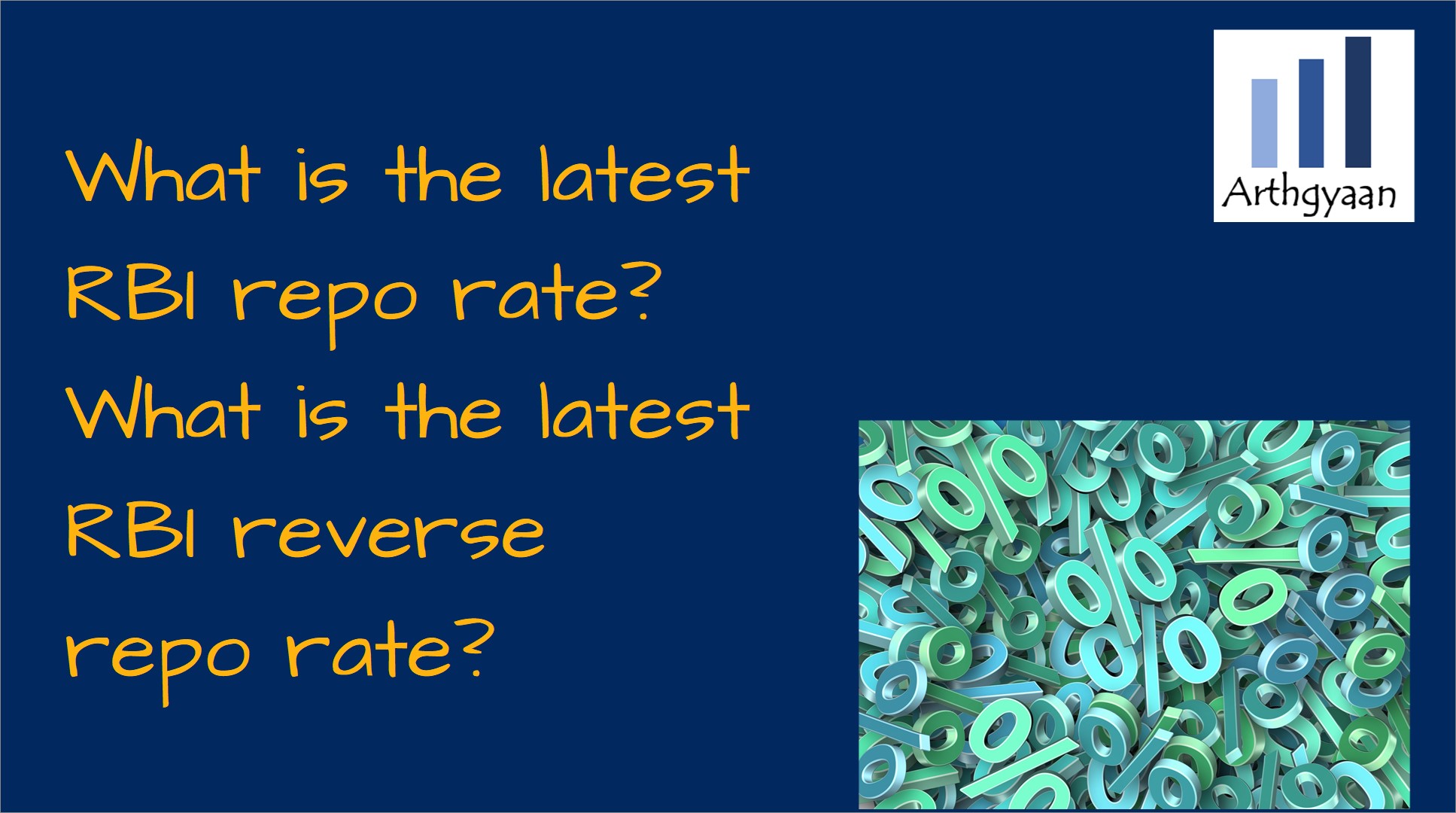What is the latest RBI repo rate? What is the latest RBI reverse repo rate?
This article shows you the current and historical values of the RBI repo and reverse repo rates.
This article shows you the current and historical values of the RBI repo and reverse repo rates.

The latest repo rate is 5.25%. This rate was last reviewed by RBI on 05 Dec 2025.
The latest reverse repo rate is 3.35%. This rate was last reviewed by RBI on 07 Feb 2025.
The repo rate is currently going up in India due to inflationary pressure.
RBI, after hiking the Repo rate from 4.00% to 6.50% in quick succession, has finally started cutting the repo rate:
The hike from 2022 was a part of inflation-taming measures put in place by global central banks.
As inflation had been rising as the economy recovered, the repo rate rise was inevitable. As inflation is now cooling and Budget 2025 has seen tax rates to reduce, the repo rate has been cut for the first time since May 2020.
The charts below show the history of the RBI repo and reverse repo rates over time:
Chart: Arthgyaan • Source: RBI • Get the data
Chart: Arthgyaan • Source: RBI • Get the data
Repo rate is the rate of interest RBI, the country’s central bank, charges all other banks when borrowing from RBI. The higher the repo rate, the more banks have to pay RBI when borrowing. As a result, the bank charges higher interest rates to people who borrow. The bank offers higher rates for depositors in savings accounts and fixed deposits.
The repo rate, therefore, directly impacts
The basic interest rate equation for a loan is:
Rates for loans = Base rate + Spread
The base rate is derived from the RBI Repo rate. The spread depends on the loan type and the borrower’s credit quality. For example, home loans have a lower spread since they are collateralised. In contrast, personal loans, being without collateral, have a higher spread.
The repo rate, and its counterpart, the reverse repo rate, which RBI offers to banks for depositing money with RBI, are crucial monetary policy tools that affect liquidity and inflation. The higher the repo rate, the higher the loan rates and the more difficult it is to borrow. The lower the amount of borrowing, the less the money supply since borrowers spend their loans for their purpose. Less spending by borrowers or depositors, who are attracted by higher deposit rates, the lesser the amount of money available in the economy, thereby cooling inflation.
When a bank has excess money, it can lend to the RBI and get some interest. This interest rate that the RBI offers to banks is the reverse repo rate. The reverse repo rate is a monetary policy tool where the RBI can remove excess liquidity from the economy by offering higher rates.
When banks deposit their money with the RBI, they get government securities in return as collateral.

Published: 18 December 2025
8 MIN READ
1. Email me with any questions.
2. Use our goal-based investing template to prepare a financial plan for yourself.Don't forget to share this article on WhatsApp or Twitter or post this to Facebook.
Discuss this post with us via Facebook or get regular bite-sized updates on Twitter.
More posts...Disclaimer: Content on this site is for educational purpose only and is not financial advice. Nothing on this site should be construed as an offer or recommendation to buy/sell any financial product or service. Please consult a registered investment advisor before making any investments.
This post titled What is the latest RBI repo rate? What is the latest RBI reverse repo rate? first appeared on 15 Jan 2023 at https://arthgyaan.com